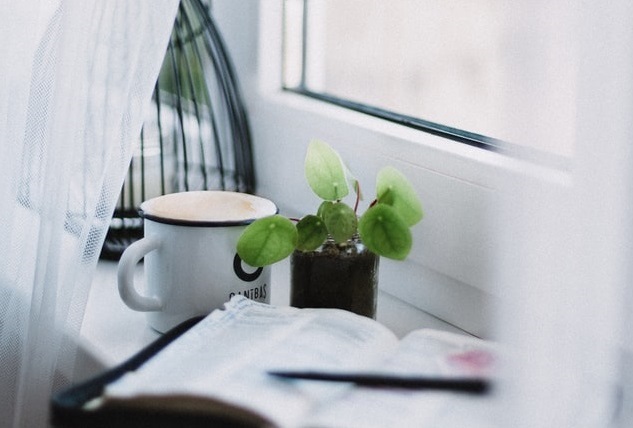7 Tips To Help You Grow Your Own Flowers This Year
with guest contributor Francis Russell
Are you tempted to grow flowers this year, but not quite sure where to start? Or maybe you already grow your own, but you’re looking for some advice to help you improve your technique and get the right combination this year for your garden, your pots and your pollinators. Local botanist Francis Russell is our go-to gardener, and he has shared some tips to help you get the most out of your growing experience this year, and support Guernsey’s pollinators along the way.
There’s something for everyone here, whether you’re an avid gardener or just starting out with a few pretty pots by your front door.

1. Choosing your Blooms
First things first, have a think about the type of flowers you’d like to grow. If you’re unsure, the flowers suggested in 15 Cut Flowers We Can Share With Guernsey’s Bees will give you a great selection of fresh, brightly coloured flowers that you can cut and bring indoors. An added bonus is that most flowers that are brightly coloured attract bees too. Some even have UV markings on their petals called 'honey guides' that direct the bees straight to the nectaries.
Consider the lifespan of the flowers you are planting. Some, like Sunflowers, are centrepieces and will only flower once. Others like Sweet Peas and Cosmos will continue flowering - the more you harvest them, the more they bloom.
2. Sowing the Seeds
Once you’ve chosen your flowers, it’s time to sow the seeds. To grow flowers from scratch, you’ll need to ensure you fill your container three quarters full with soil and make sure it has good drainage. Spread the seeds lightly across the surface, and lightly cover them with compost. Water gently, then keep the soil moist - it’s important that you don’t overwater them. Avoid direct sun at this stage as this will dry out the container. Also try to avoid big changes in temperature while nights are still cold.
3. Planting Out
When it comes to planting out in the garden please use peat free compost, knowing that you are doing your bit to protect threatened peat bogs. If you have drier, sandy soils - this is for all of you West Coast Guerns! - look for drought-tolerant flowering plants that will cope well here, like lavenders and Californian poppies.
4. Sunshine or Shade?
If you plant your flowers outside, think about their position. Some flowers, like sunflowers, Californian poppies, cornflowers and marigolds, will look for the sun, however most types of flowers will tolerate partial shade. If you are growing in pots or containers, the good thing is that you can position them. As long as they see the sun for part of the day they will thrive and they may benefit from not getting too parched.
5. Food For Thought
Many flowering annuals are on the smaller side and will not need feeding, but things like sunflowers and sweet peas will definitely benefit from a slow release or liquid fertiliser feed once the plants are around half grown. If you’re looking for flowering plants that give bees pollen and nectar and reward us with food too, try raspberries, cultivated blackberries or maybe even a fruit tree.

6. Sweet Scents
Many of us focus on the way a plant looks, but when it comes to flowers they not only look good, they have a wonderful scent too. A posy of classic sweet peas will smell amazing in your home. You could also grow some night-scented stocks in a container by the back door to catch their intoxicating smell as you unwind in the garden after a long day at work. And aromatic flowers such as thyme, lavender and rosemary are great for attracting bees.
7. Rewilding
If you’re looking for a wildlife friendly alternative to lawns and borders, why not create a wildflower area in your garden. You can sow most wildflower seeds in March or April but remember, you will need a scruffy lawn or an area without grass otherwise the vigorous grasses will outcompete the seedlings. There’s a selection of ready mixed wildflower seeds available to buy locally. Many contain a mixture of annuals (which will only flower for one season) such as cornflowers and poppies, or perennial wildflowers (which regrow every year) such as ox-eye daisies and red campion.
We hope these tips help with whatever stage you are in your gardening journey. Got more questions? Feel free to let us know over on social and we will happily pass them on to Francis.
A bit about Francis
"Hi, I'm Francis. My first memories of gardening take me back to my early years growing up in a Norfolk village where my father had a decent veg plot. From both parents I inherited a love for growing plants and a lifelong fascination in the natural world. My botany/zoology degree provided me with a foundation from which I have enjoyed a rich and varied career in nature conservation, teaching, occupational therapy and most recently, coordinating Guernsey's Asian hornet control programme. I've been keeping bees for 30 years thanks to my old science teacher who set me up with my first hive of honeybees – but that is another story!
I have a passion for wildlife gardening and am very pleased to talk about our wild bees with The List, and to share some of the things that bring joy into my life."

Has Francis convinced you that you need more flowers in your life? Check out 15 Flowers We Can Share With Guernsey's Bees for his recommendations on wild flowers you can grow to encourage more bees into your garden.
He has also written 10 Simple Things To Do To Help Bees in Guernsey showing us how we can step to give bees a helping hand this summer.


